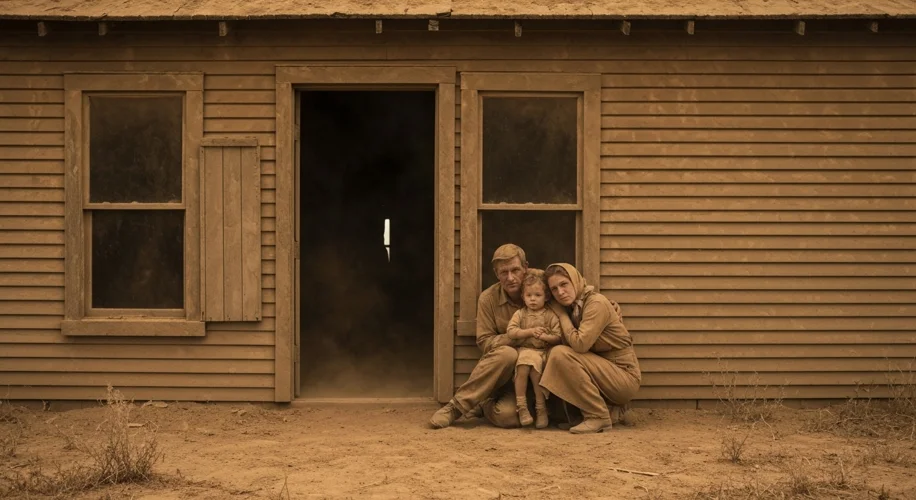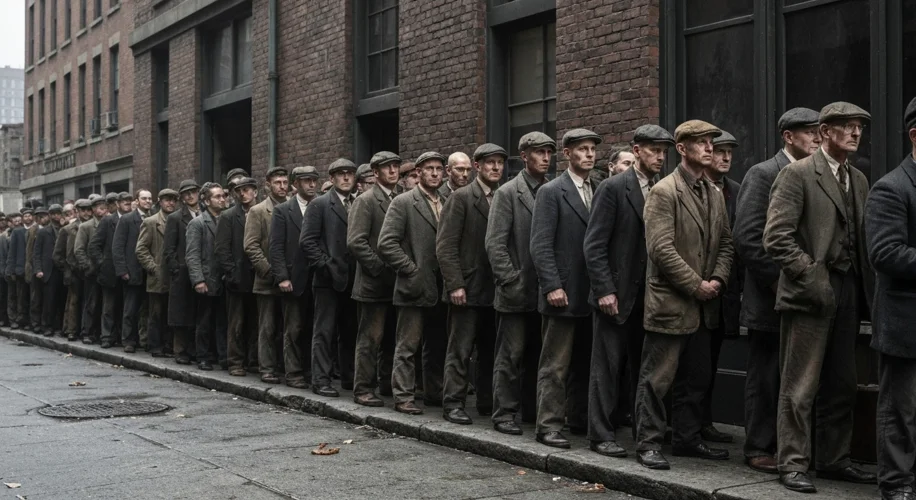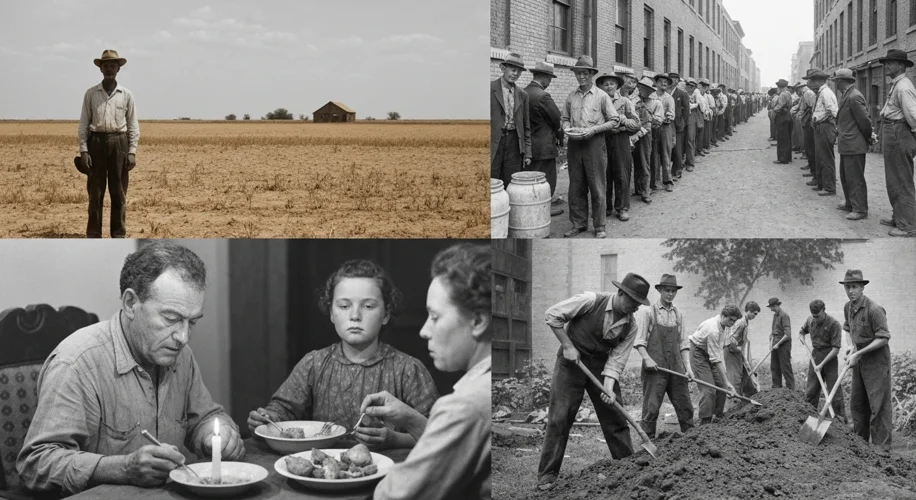The year is 1933. The air hangs thick with dust and despair. Across America, the American Dream has been shattered, replaced by a gnawing hunger and a pervasive sense of hopelessness. The Great Depression, an economic catastrophe of unprecedented scale, has gripped the nation, transforming the lives of ordinary men, women, and children in ways that would echo for generations.
For families like the Millers in Oklahoma, the land that once promised bounty had become a cruel mistress. The “Dust Bowl” was not merely a name; it was a suffocating reality. Dust storms, massive walls of black grit, rolled across the plains, burying homes, choking livestock, and rendering farmland barren. “We’d wake up with dust in our mouths, in our eyes, everywhere,” recalled Eleanor Miller years later. Their farm, their livelihood, was slipping through their fingers like the very soil that vanished with the wind. They, like hundreds of thousands of others, would eventually join the desperate exodus westward, seeking a sliver of hope in California, a journey often romanticized but in reality fraught with hardship and discrimination.

In the bustling cities, the scene was no less grim. Factories stood silent, their smokestacks cold. Millions were unemployed, their savings vanished, their futures uncertain. John Henderson, a skilled mechanic from Detroit, found himself in a breadline for the first time in his life. The shame was a heavy burden, almost as heavy as the hunger pangs. “You worked your whole life, you provided for your family,” he once told a journalist, his voice still tinged with the raw pain of that era. “And then, one day, you’re just… useless. No one needs you.” He and his wife, Martha, resorted to bartering, trading Martha’s sewing skills for meager supplies. They learned to make do with less, stretching every penny, every scrap, to keep their children fed and clothed.
The social fabric of America strained under the immense pressure. Banks failed, taking with them the life savings of countless families. The optimism of the Roaring Twenties curdled into widespread fear. Yet, amidst this profound struggle, the human spirit of resilience shone through. Neighbors helped neighbors, sharing what little they had. Communities organized soup kitchens and relief efforts. Women, often the unseen anchors of the family, took on new roles, from finding work wherever they could to managing scarce resources with remarkable ingenuity.
Consider the story of the O’Malley family in New York City. With Patrick laid off from the docks, his wife, Mary, a former homemaker, began selling homemade pies on the street corner. She’d rise before dawn, her hands raw from kneading dough, her heart filled with a fierce determination to keep her family afloat. Their children, too young to understand the full gravity of the situation, learned the value of frugality and cooperation. They mended their clothes, grew vegetables in a small city plot, and found joy in simple pleasures, like reading borrowed books or listening to the radio.

The Great Depression wasn’t just an economic downturn; it was a crucible that reshaped American society and its relationship with government. The perceived failures of laissez-faire capitalism led to a demand for greater federal intervention. President Franklin D. Roosevelt’s New Deal programs, though met with mixed reactions, offered a lifeline to millions. From the Civilian Conservation Corps, which put young men to work on conservation projects, to the Works Progress Administration, which funded public works and the arts, these initiatives aimed to provide jobs, stimulate the economy, and restore faith in the nation’s future.
The impact of the Depression extended beyond economic statistics. It fostered a generation that understood hardship, thrift, and the importance of community. It instilled a deep-seated caution regarding financial speculation and a lasting appreciation for security. The experiences of those who lived through it – the farmers battling dust, the city dwellers facing unemployment, the families making impossible choices – served as a stark reminder of the fragility of prosperity and the enduring strength of the human will to survive and rebuild.
The Great Depression tested America to its core, but in its darkest hours, it revealed the extraordinary resilience, adaptability, and compassion of its people. Their stories, etched in the annals of history, continue to serve as a testament to the human spirit’s ability to endure and ultimately triumph over adversity.

